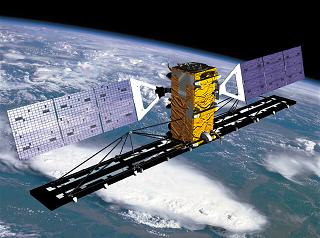Canada is actively involved in space debris mitigation research and development activities. At the international level, Canada hosted the International Conference on Protection of Materials and Structures from the Space Environment (ICPMSE) in May 2008, and contributed to the 37th Committee on Space Research (COSPAR) Scientific Assembly in July 2008.
At the national level, the space debris research and development activities are coordinated by the Canadian Space Agency (CSA), which formed the Orbital Debris Working Group (ODWG). The group was formed in order to address a number of objectives:
“to increase the Scientific and Technical (S&T) knowledge and awareness of orbital debris in the space community;
to identify and encourage targeted Research and Development (R&D) in orbital debris and mitigation measures;
to identify and encourage development of orbital debris detection and collision avoidance techniques and technologies;
to promote Scientific and Technical (S&T) collaboration across Canada and with our international partners;
to identify Scientific and Technical (S&T) opportunities in relation to future potential missions which can directly benefit from the results of targeted Research and Development (R&D) and novel operational techniques, and develop and coordinate technical solution in Canada and with international partners; and
to establish and maintain technical liaison with our international partners in order to foster a sustainable space environment.”
The Canadian space debris mitigation research and development activities are focused on three main areas: hypervelocity impact facilities, debris mitigation and self healing materials, and spacecraft demise technologies. Hypervelocity impact facilities are facilities that are capable of accelerating projectiles to velocities of more than 10 km/s. Canada is developing an implosion-driven hypervelocity launcher facility. Such a facility could accelerate projectiles having a mass of 10 g to speeds of 10 km/s, facilitating meaningful impact studies. Self healing materials have the capability to initiate a self healing process after an impact, being an in-situ mitigation of space debris damage on board spacecraft. The Canadian Space Agency has supported the efforts to develop and test a self healing concept demonstrator. The spacecraft demise technologies ensure intentional and integral disintegration during re-entry, so that no debris reaches Earth. In this direction, studies that investigate various technologies that could be used to de-orbit micro- and nanosatellites have been conducted.
In Canada, the space operators and manufacturers are adopting the space debris mitigation measures on a voluntary basis. The Inter-Agency Space Debris (IADC) guidelines are used for monitoring activities to prevent on-orbit collisions and conduct post-mission disposal. There are also strict requirements integrated in its policies and regulations that address the post-mission disposal of satellites. For example, as required by the Canadian Remote Sensing Space System Act, space system manufacturers have to provide information regarding the method of disposal for the satellite, the estimated duration of the satellite disposal operation, the probability of loss of human life, the amount of debris expected to reach the surface of the Earth upon re-entry, an estimate of the orbital debris expected to be released by the satellite during normal operations by explosion, etc. There are also interesting recommendations made for the operation and post-mission disposal of satellites in Geostationary Orbits. The Environmental Protection of the Geostationary Satellite Orbit recommends “that as little debris as possible should be released into the geostationary orbit during the placement of a satellite in orbit”, and also that “a geostationary satellite at the end of its life should be transferred, before complete exhaustion of its propellant, to a super synchronous graveyard orbit”, where the recommended minimum re-orbiting altitude is given as 300 km.













 Subscribe to our RSS feed
Subscribe to our RSS feed












There are no comments.
Add A Comment